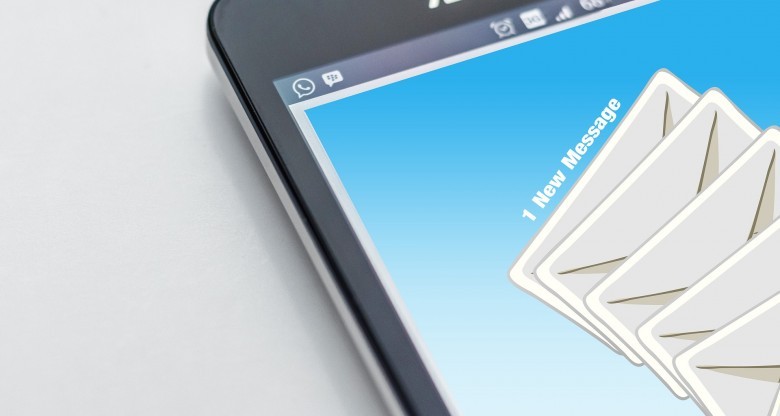
Learning the true meaning of and the proper e-mail etiquette for using "CC" and "BCC" or "Cc" and "Bcc" can save you a lot of time, effort and embarrassment.
Some people use "CC" and "BCC."
MicroSoft Outlook and AOL both list "Cc" and "Bcc" in their e-mail format.
In both systems, the e-mail- sender needs to find and then invoke the "Bcc" setting to use it.
Most people think "Cc" stands for "Carbon Copy" and "Bcc" means "Blind Carbon Copy."
In the days when the majority of business offices' waste baskets were filled with carbon paper and "secretaries" walked around with blue hands, that's what "Cc" meant.
Today, "Cc" stands for "Courtesy copy."
"Courtesy copy" implies both a change in meaning and a change in attitude.
Anytime you send someone an e-mail, you should be doing so as a courtesy to that person. Doing so implies the person receiving the e-mail wants, needs, expects or asks for the information.
Anything else falls under the category of "SPAM"
According to Darren Miller, "SPAM" stands for "Stupid People Annoying Me."
To me, SPAM means "Sending Pesky Announcements Maliciously"
SO WHAT ARE THE USES?
Using "Cc" can be a useful business tool in the following instances:
1. When members of a team, group or department need current information about a particular project, policy, procedure, or event.
2. When others outside the team, group or department want, or need or ask to know current information about a particular project, policy, procedure, or event
3. When interested parties such as managers, executives or directors ask to be kept informed of information that affects the company's goals, objectives or forecasts
4. When the sender expects and asks for responses, comments or corrections from the "Cc" recipients
5. When the senders want to find out if the recipients care about or read their messages
Okay, so Number Five isn't high on the list. But...
Using "Bcc" can be a useful business tool in the following instances:
1. When the sender does not want to crowd the "To" or "Cc" area of the e-mail with a long list of names or e-mail addresses
2. When the sender wants to maintain the privacy of the recipients who are not listed in the "To" area. More on that later.
3. When the sender is sending a newsletter or e-mail blast to a designated group where all the recipients know and understand that they are not the only ones receiving the e-mail
SO WHAT ARE THE ABUSES?
1. The first abuse occurs when senders use the "Cc" to mean "Cowards Copy" or "Cover your Carcass."
In these instances, the sender wants as many people as possible, including his or her bosses, that he or she has performed a task implied to be requested by the person or group identified in the "To" area.
Some senders fire off "Ccs" to their bosses to prove they are actually working.
Sometimes, use of the "Cc" indicates that paranoia runs rampant in the organization.
It means, "I don't trust you." "I don't trust me."
"I don't trust you to remember we changed the meeting times."
"I don't trust me to remember I told you to change the times."
2. The second instance employs the "Monkey Removal" technique.
In this instance, the sender is sending the recipients in the "To" area notice that he or she is signing off the project and that the primary recipients must now complete their missions or fulfill their parts of the bargain.
The message is, "I've done my part. Now the rest is up to you." To ensure they are covered, they e-mail anyone who might in any way be involved or are aware of the situation..
3. The abuse that most people complain about is having the sender reveal their names and e-mail addresses in the "Cc" area.
Unscrupulous e-mail address harvesters can simply right click a name in the "Cc" area and the software will reveal that person's e-mail address. This is an invasion of privacy that offends most people.
My friend, Dan Poynter, calls this practice, "offensive, bordering on extortion."
Another friend calls the overuse of the "Cc" a "scourge that should be stopped... (It is) a bludgeon that screams, ‘I don't trust you! So I am putting you on notice that all these people are my witnesses that I asked you to do this for me.'"
4. Some people listed in the "To" area become offended when their business information is shared with people listed in the "Cc" area. This causes them to wonder who these people are and why they are included in the communication.
5. Similar to the issue listed in Number Four, some people use the "Cc" area thinking they are using it correctly but then include sensitive, confidential or personal information that should be for the person or group listed in the "To" area.
Besides the obvious abuse of the "Cc" format, senders and receivers can become the victim of the "Reply to All" catastrophe.
In this scenario, someone who receives an e-mail as a "Cc" recipient wishes to respond to the sender. Perhaps that recipient wants to send a personal, confidential or critical reply to the sender. The reply would include information intended for the sender's eyes only.
The catastrophe occurs when the recipient hits the "Reply to All" button rather than the "Reply" button.
Now, everyone in the "Cc" area receives a copy of the reply.
ABUSES WITH "BCC"
1. Sending messages using the "Bcc" technique can become a huge time waster that could negatively impact your reputation or your organization's image.
Many people use "Bcc" in an effort to protect the privacy of people who legitimately should receive the information without listing their names or e-mail addresses in the "To" or "Cc" areas.
While this is a noble gesture, it can backfire on the senders.
Recipients of the "Bcc" message do not know who else received that particular message. These recipients then forward or call other people whom they think should know about the information.
If those people were included in the original message, they now become bombarded with the same message from multiple people in multiple forms.
This wastes the time of the people forwarding the message and frustrates the people who received the original message and now have multiple copies of it jamming their e-mail box.
2. Using the "Bcc" can easily destroy personal and business trust.
Consider this scenario.
John sends Joe an e-mail. He also "BCCs" a dozen other people on Joe's message.
Joe does not know that John "BCCed" the other people.
A week later, someone who received John's message as a "Bcc" talks to Joe.
In the conversation, the "Bcc" recipient refers to John's e-mail.
Joe didn't know that John copied all the others in a message Joe thought was specifically to him.
Will Joe ever trust John again. I don't think so.
3. Many people use the "Bcc" capability to easily send SPAM.
State and Federal laws are now cracking down on this practice.
FINAL THOUGHTS ON CC
Before you use either of the devices, think, use common sense, and be careful.
Because of the pressure cooker business world we live in, using those three guiding principles sometimes becomes a challenge.
Because of a hectic personal or family life, we sometimes need to slow down and consider our actions and their impact on others.
Executives, managers and supervisors should take the lead in the correct use of "Cc." Rather than letting useless e-mails clutter up their in-boxes, real leaders set standards and communicate to their employees if and when they want to be copied.
Employees should use "Cc" to move business forward rather than as a personal protection program.
When used for the right reason at the right time, "Cc" can save time, build teamwork and enhance productivity. When used incorrectly, it can bring about the opposite results.
FINAL THOUGHTS ON BCC
I use the "Bcc" as a tool to test the quality of my e-mails.
When I am unsure of how my e-mails will look on someone's screen or whether or not I was successful sending a requested attachment, I will "Bcc" myself to see what my message looks like to the receivers.
FINAL THOUGHT
E-mail is a powerful business tool. However, as with any tool, proper care, handling, and safety should guide your use to achieve your project goals.
Al Borowski, MEd, CSP, PP, is a business writing expert who writes and speaks on business writing and effective e-mail issues.
Al has been a popular seminar leader for The American Management Association, Dun & Bradstreet, and several top universities. He speaks at conventions, conferences, and meetings.
His website, http://www.connectallthedots.com offers free audio, video, and written tips on writing issues and features business and e-mail writing quizzes to measure your comfort level with those skills.


























